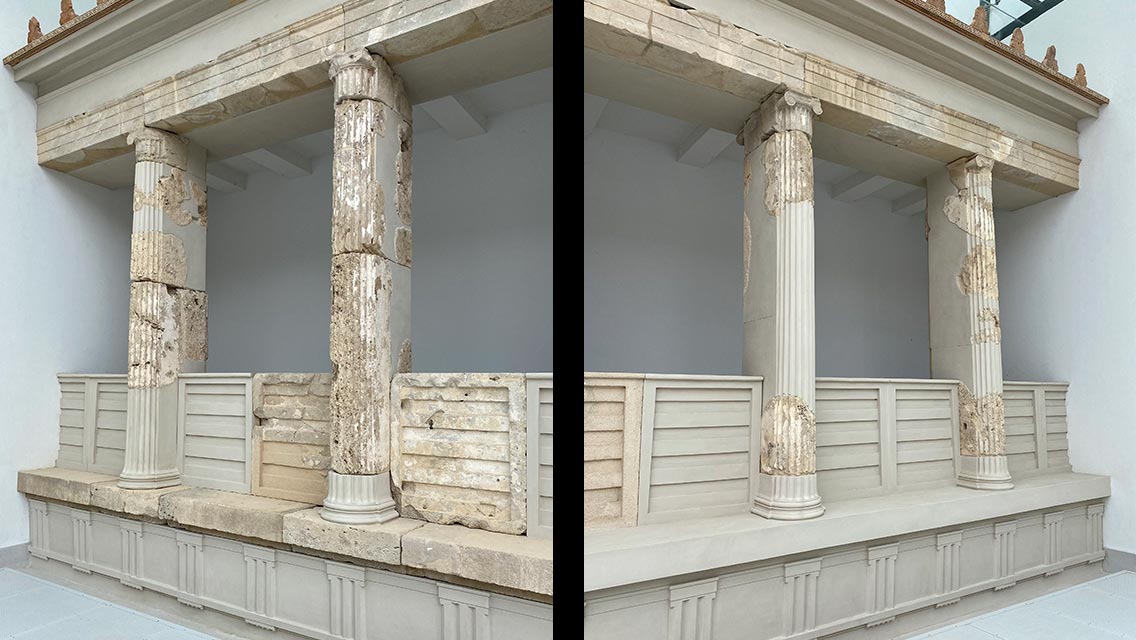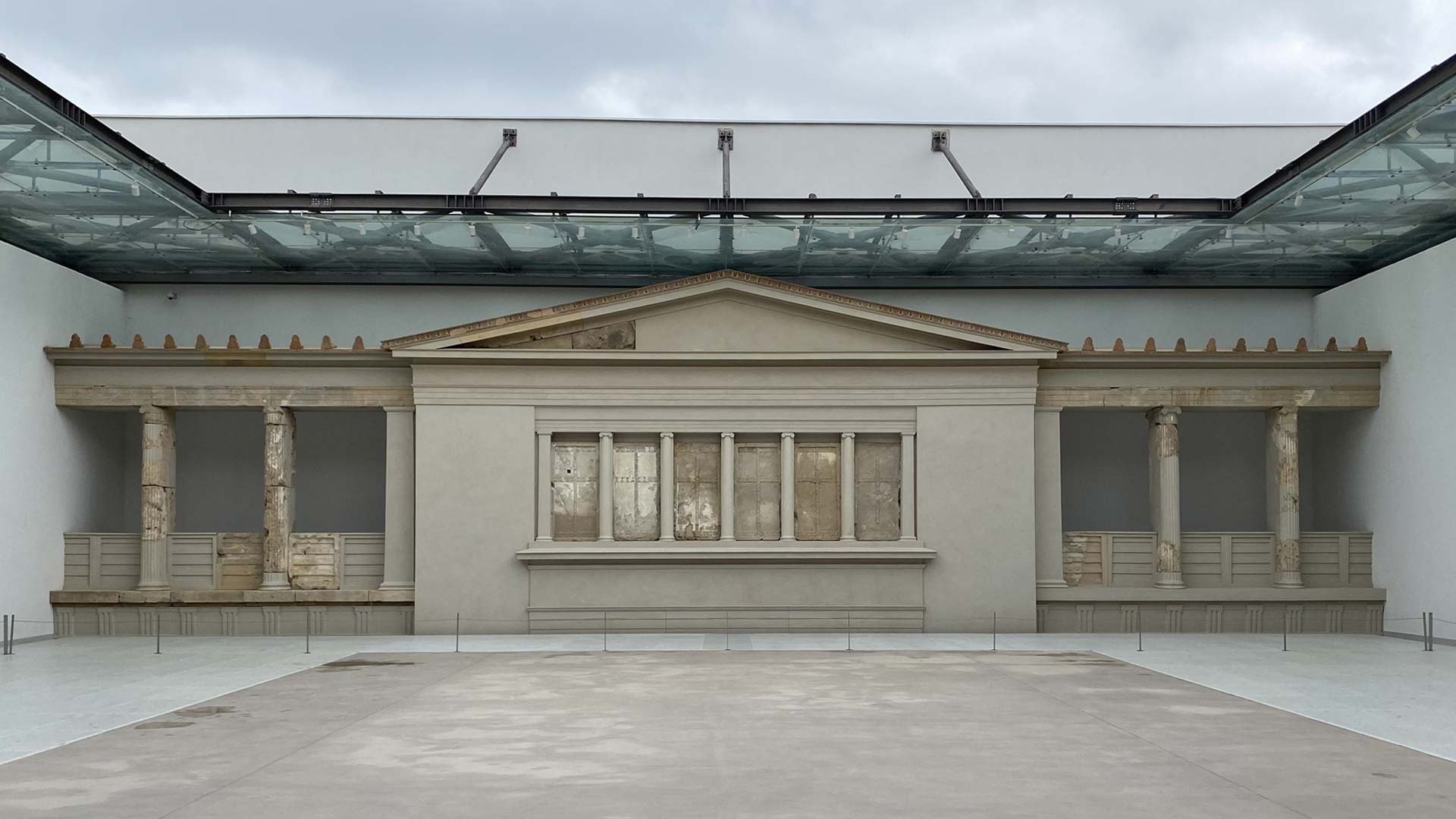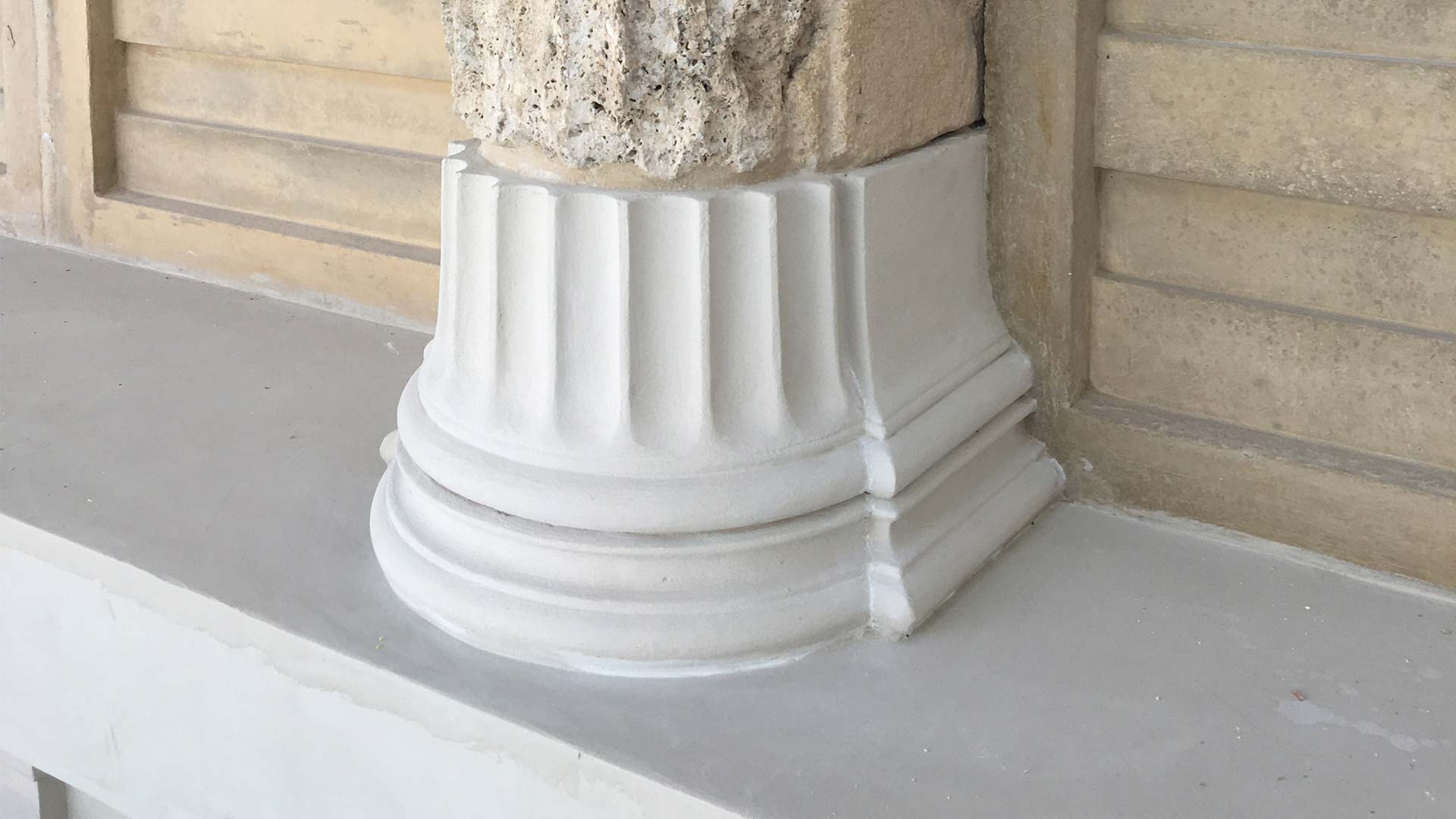
Ionian Base
3D-Printed Mold
The project encompasses the detailed design and 3D printing of the base of an Ionic Column, a significant architectural element forming part of the facade on the second floor of the Palace of Aigai. The 3D-printed column base serves as a master form for creating a high-fidelity silicone mold, used to cast final bases in mortar for accurate and durable integration in the facade’s restoration.
The 3D printing process was executed at a 1:1 scale to faithfully replicate the original ancient element. Standing at approximately 400 mm in height, the column base was divided into four vertical sections, each around 300 mm, to optimize print quality and structural integrity. These sections were subsequently assembled to form a seamless replica of the original base.
For this project, Fused Deposition Modeling (FDM) technology was selected, employing Polylactic Acid (PLA) filament due to its reliability and precision in capturing fine architectural details. The entire printing process required approximately 100 hours, ensuring meticulous reproduction of the base’s intricate design.
The 3D-printed mold is designed using photogrammetry data from the existing architectural elements at the archaeological site of the Palace of Aegae. After printing, these molds are used to create a negative silicone mold, from which the final mortar casts are produced.
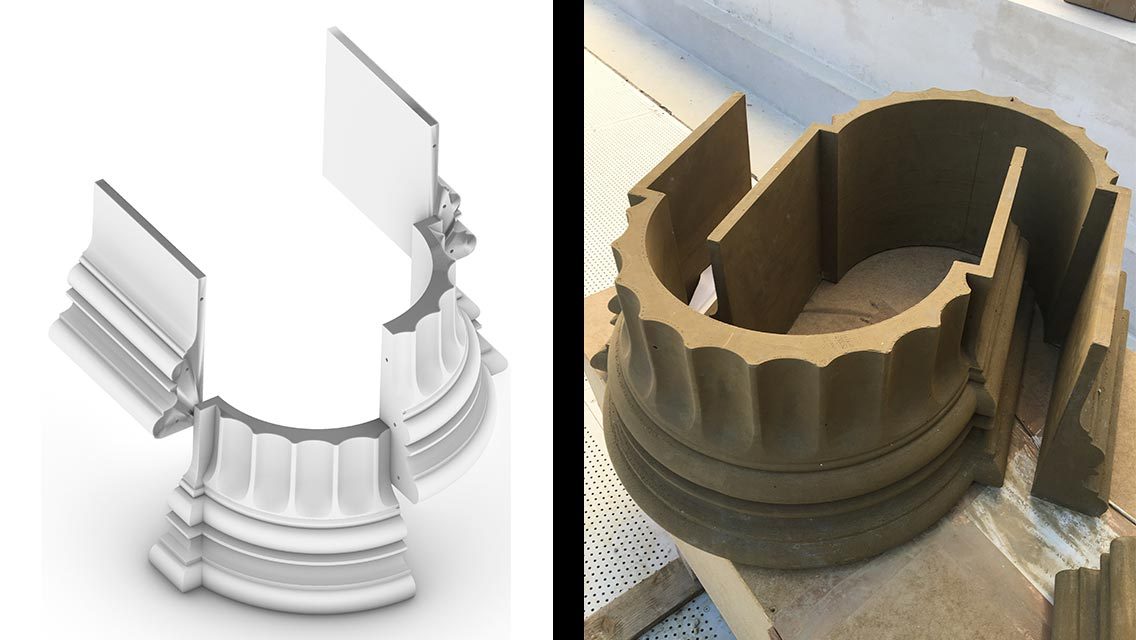
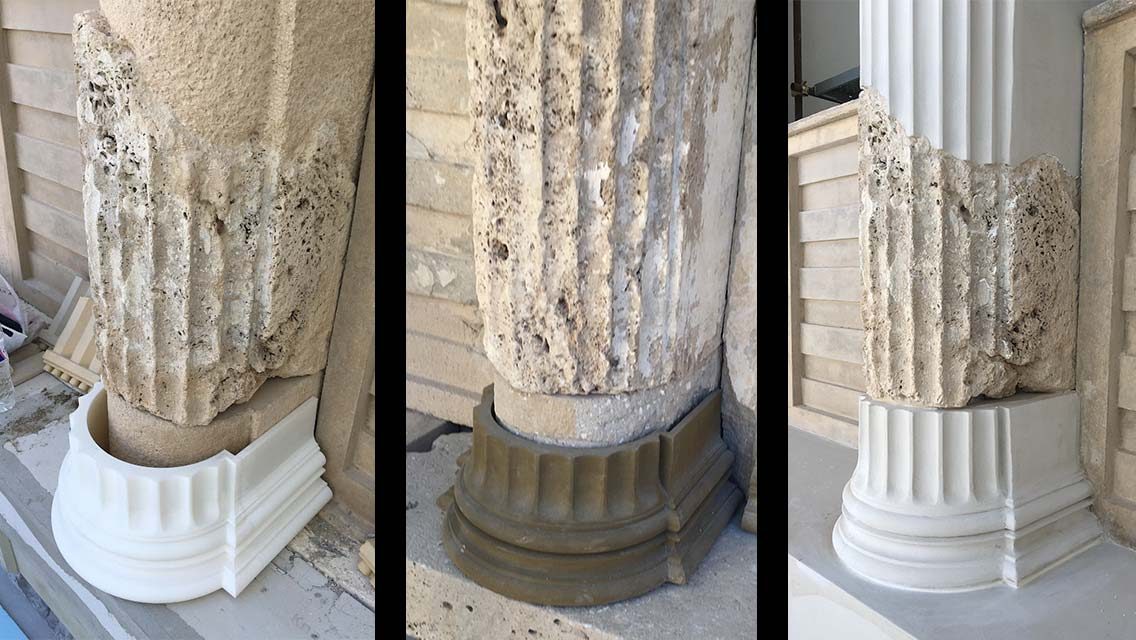
The construction process from 3D-printed mold to the integration of the casted mortar piece to the ancient architectural element.
The four column bases integrated to the ancient columns.
